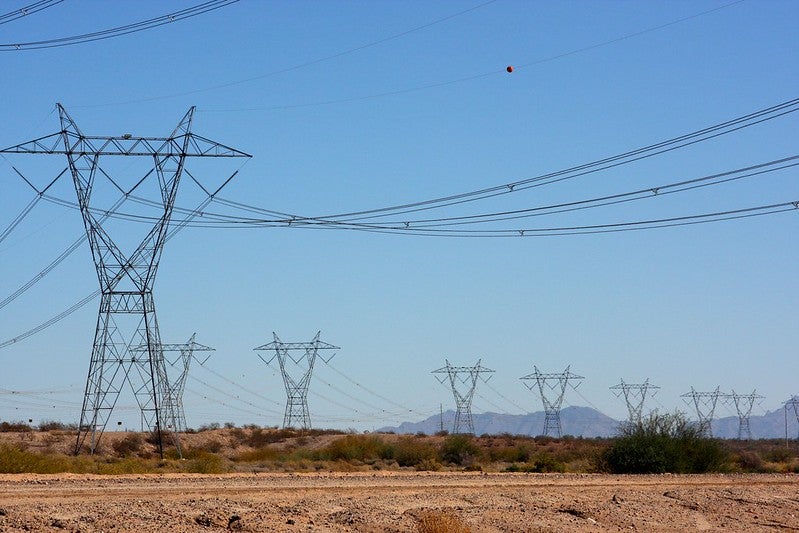
National Grid is expediting the integration of clean energy projects totalling up to 20GW into its electricity transmission and distribution networks in England and Wales, as part of its ongoing collaboration within the industry.
Within its transmission network, 19 battery energy storage initiatives, with a combined capacity of approximately 10GW, will receive earlier connection dates, allowing them to plug in around four years sooner than their current agreements stipulate. This acceleration is achieved through a novel approach that eliminates the requirement for non-essential engineering preparations before connecting the storage facilities.
This new policy is a component of National Grid’s broader initiative to reform connections, with a focus on enhancing transmission capacity. The effort is led by the Electricity System Operator (ESO), which holds the contractual relationships with these connecting projects. This initiative is being carried out in conjunction with National Grid Electricity Transmission (ET), responsible for designing and constructing the necessary transmission infrastructure in England and Wales to facilitate the integration of these projects.
In the Midlands, South West of England, and South Wales, National Grid recently unveiled an additional 10GW of untapped capacity. This announcement is poised to expedite the connection of numerous low-carbon technology projects, and in some cases, it will bring “shovel-ready” schemes forward by as much as five years.
National Grid has proactively engaged with over 200 projects that express interest in fast-tracking their distribution connection dates in the initial phase of this capacity release. Of these, 16 projects aim to connect within the next 12 months, while another 180 projects are looking to establish connections within the two to five-year timeframe.
The accelerated 20GW capacity enhancement is equivalent to the output of six Hinkley Point C nuclear power stations. Achieving this milestone has involved extensive collaboration with industry stakeholders, Ofgem, and the government to devise innovative solutions that streamline and expedite the integration of clean energy projects.
This effort encompasses cooperative initiatives between the UK’s transmission and distribution networks, which are part of the Energy Networks Association’s (ENA) three-step plan for improving connections. The primary objective is to enhance the technical interface coordination between these networks, leading to the unlocking of substantial gigawatts of capacity.
The novel approach to transmission storage connections represents a central policy within the Electricity System Operator’s (ESO) five-point plan to expedite project connections. This approach coincides with a comprehensive review by National Grid Electricity Transmission (ET) of projects in the connections pipeline in England and Wales. This review aims to identify projects that can be advanced based on new planning assumptions mutually agreed upon with the ESO.
Traditionally, National Grid has conducted network reinforcements before allowing a project to connect, a process that sometimes introduces significant delays, as it operated under the assumption that batteries would charge during peak times and export energy when generation is high. This practice could exacerbate system peaks and constraints.
Following an in-depth technical analysis carried out by electricity transmission engineers, National Grid will now extend transmission connections to selected battery projects before network reinforcements are completed. This extension is contingent upon an agreement that the ESO can modify the battery’s behavior in specific operating conditions to mitigate its impact on the overall system.
Another phase of the initiative, scheduled for the upcoming year, will offer expedited transmission connections to an additional set of clean energy projects, primarily focusing on batteries and hybrids (combinations of batteries co-located with wind or solar installations). This phase has the potential to advance an additional 10 GW of clean energy capacity.
National Grid Electricity Transmission president Alice Delahunty said: “We’re committed to speeding up connections and creating a ‘fit for the future’ process for plugging projects into the grid.
“Bringing these battery projects forward is one of a range of actions that our electricity transmission business is delivering alongside the system operator and wider industry to unlock clean energy capacity in England and Wales.
“We’re really encouraged by the recognition these early joint steps by our industry are receiving. They’re paving the way for the more fundamental connections reform that we’re collectively working with government and the regulator to deliver to keep Britain on track for a secure, affordable and net zero energy system.”
Engineers from National Grid’s distribution division are actively exploring opportunities for further acceleration in project connections and will reach out to project owners on an individual basis to discuss the next steps. A second round of expressions of interest is being initiated for the next set of customers.




